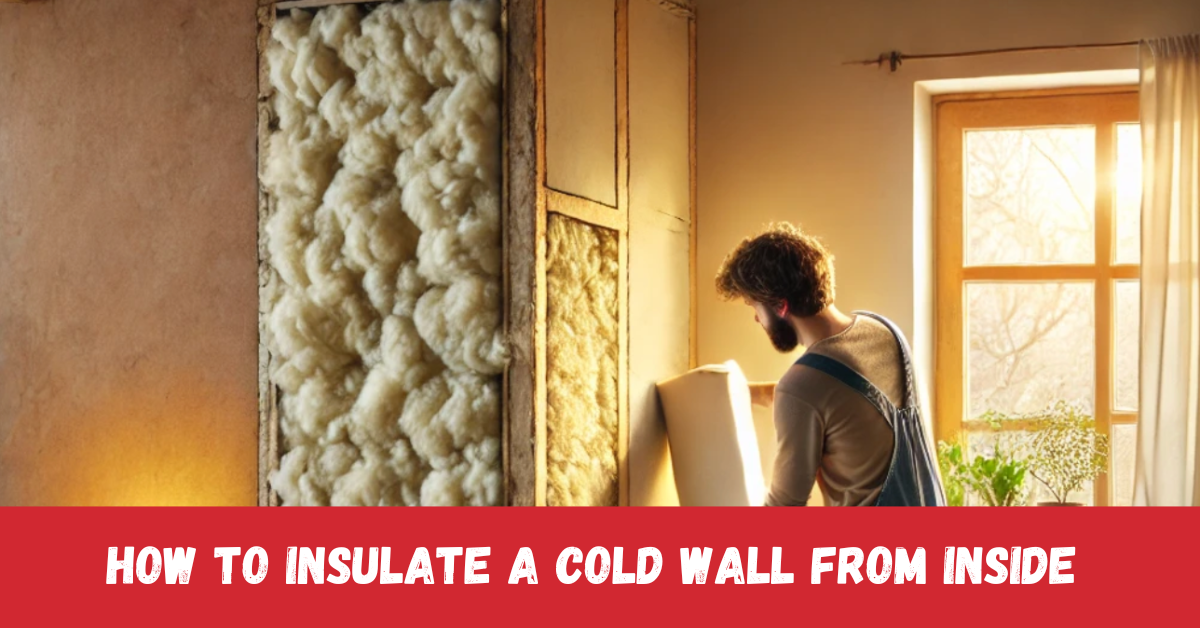Cold walls are beneficial in several ways, such as they can make a room uncomfortable and raise energy costs as you try to keep the space warm.
To effectively insulate a cold wall, choose insulation methods that trap heat, block drafts, and prevent cold air from entering, ensuring warmth stays inside.
Moreover, proper insulation not only reduces heating bills but also creates a more energy-efficient and comfortable living environment.
This guide explores the best methods for insulating a cold wall, from affordable DIY options to professional solutions, so you can enjoy a warmer, cozier space.
Why Is Wall Insulation Important?
Insulating walls not only make a home more comfortable but also reduces heating bills by trapping warmth and preventing cold drafts.
Walls without sufficient insulation let heat escape easily, causing the interior to feel colder and requiring more energy to maintain warmth.
Best Ways to Insulate a Cold Wall: Step-by-Step Guide
Here’s the step-by-step guide on one of the most asked questions, how to insulate a cold wall. Follow the steps mentioned below and achieve this task with ease and perfection.
1. Identify the Type of Wall
Before insulating, determine your wall type. Exterior and interior walls may require different insulation methods depending on their construction. Common wall types include:
- Solid Walls: Often in older homes, these lack internal cavities.
- Cavity Walls: Found in newer homes with space between two wall layers, ideal for filling with insulation.
2. Choose an Insulation Method
- Internal Wall Insulation: This involves adding insulation to the interior wall surface. It’s effective and doesn’t alter your home’s exterior appearance, but it does reduce room space slightly.
- External Wall Insulation: Applied to the outer wall, this technique improves insulation without reducing indoor space but changes the exterior look.
- Cavity Wall Insulation (If Applicable): For cavity walls, injecting insulation into the wall cavity is efficient, filling gaps to prevent heat loss.
3. Installing Insulation Material
Follow these methods based on your chosen insulation style:
- Thermal Liner (for Internal Walls): Attach a thermal liner, also known as insulating wallpaper, to the cold wall. This affordable method reduces heat loss while being easy to install for DIY enthusiasts.
- Rigid Foam Insulation Boards (Internal/External): For a thicker layer of insulation, use rigid foam boards, which can be cut to fit and covered with drywall on interior walls or rendered on exterior walls.
- Spray Foam Insulation (Cavity Walls): For cavity walls, spray foam insulation fills the gap entirely, providing excellent thermal resistance and preventing drafts.
4. Address Potential Moisture Issues
Moisture and condensation on cold walls can lead to mold and damage. Consider adding a vapor barrier to keep moisture out, especially with internal wall insulation, or check for existing dampness that may need treating before insulating.
5. Seal Gaps and Add Finishing Touches
Gaps around doors, windows, and outlets contribute to heat loss. Use caulk or weatherstripping around these areas after insulation to improve warmth further.
Additional Tips for Insulating a Cold Wall
- Install Radiant Heat Panels: These can be mounted on walls, providing direct warmth in the room and working well with other insulation techniques.
- Add Heavy Curtains: Layering heavy curtains against cold walls helps insulate the room and block drafts.
- Paint with Insulating Additives: Adding ceramic insulating additives to wall paint provides a thin, heat-reflective barrier.
Frequently Asked Questions (FAQs)
Can you insulate a wall without removing drywall?
Yes, it’s possible to add internal insulation, like thermal liners or foam boards, directly onto drywall. This method is convenient for quick installation.
What’s the best insulation material for cold walls?
For interior walls, rigid foam boards or thermal liners work well. For exterior walls, consider spray foam or rigid boards for maximum insulation.
Will wall insulation reduce my energy bills?
Absolutely. Proper wall insulation helps maintain warmth, reducing energy consumption and lowering heating costs in the long run.


